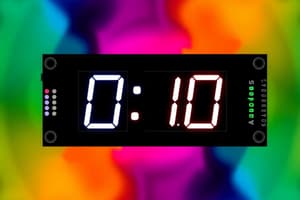Podcast
Questions and Answers
Process Control Block contains information about the process state such as Process ID, process priority, parent process, child process, and address to the next process PCB which will run.
Process Control Block contains information about the process state such as Process ID, process priority, parent process, child process, and address to the next process PCB which will run.
True (A)
The Process Control Block is stored in an unprotected memory area of the kernel.
The Process Control Block is stored in an unprotected memory area of the kernel.
False (B)
The process-state signal mask is set to 0 to allow the process to run and reset to 1 to inhibit the process from running.
The process-state signal mask is set to 0 to allow the process to run and reset to 1 to inhibit the process from running.
False (B)
The process-specific data address blocks are allocated in physical memory only.
The process-specific data address blocks are allocated in physical memory only.
The Process Control Block includes the dispatch table for process IPC functions.
The Process Control Block includes the dispatch table for process IPC functions.
Flashcards are hidden until you start studying
Study Notes
Process Control Block (PCB)
- Contains information about the process state, including:
- Process ID
- Process priority
- Parent process
- Child process
- Address to the next process PCB that will run
- Stored in an unprotected memory area of the kernel
Process State Management
- Process-state signal mask:
- Set to 0 to allow the process to run
- Reset to 1 to inhibit the process from running
Memory Allocation
- Process-specific data address blocks are allocated in physical memory only
Inter-Process Communication (IPC)
- The Process Control Block includes the dispatch table for process IPC functions
Studying That Suits You
Use AI to generate personalized quizzes and flashcards to suit your learning preferences.




